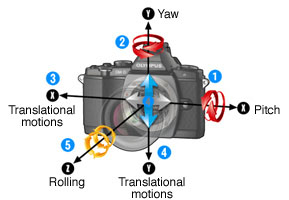As I previously wrote in a post some days ago, I got myself the Olympus OM-D EM-1 as a supplementary camera along my DSLR for my photographic work. Specially for my travel/city photography it has become my main tool.
One of the terrific advantages this camera has is the so-called IBIS (In-Body-Stabilisation-System). Olympus has done a hell of a good work in this area!

Without going to deep into technical details this means, that the camera can compensate the shakes or moves you make while holding the camera. This is achieved using a floating image sensor. So, whatever direction the shake/moves comes, the camera compesates it by moving the sensor lightning fast to the opposite direction. This is done continuosly, so you get a stable image through your EVF.
What does this mean to us photographers? Well, normally you would use the old formula “don´t put the shutterspeed under 1x time your focal lenght“, which means, you should not go under 1/300 when shooting with a 300 mm lense or under 1/50 when using the 50mm in order to avoid blurry images. But there is also an downside limit, which is different from user to user: the minimal time you are able to hold the cam without bringing severe shaking (heartbeat or even your breath) which would lead to an unsharp image. In my personal case this is somewhere between 1/60 and 1/30 when standing.
In order to avoid going under this shutter speed, you may increase your ISO (which could lead to more noise) or you would bite in to the dust and take out your tripod and mount the cam on it. With this new system things change a bit… a BIG bit.
Take for example this picture here:

This image was taken just some minutes after the sun had disappeared, totally handheld with 1/4 sec as shutterspeed. This is 3 Stops under my personal limit of 1/30. No tripod. And no need to crank up the ISO. Look at the crop: almost no shakes and totally printable and saleable.
For me and my work this means, that the need of carrying a tripod everytime I go out at night to shoot has been minimized. The IBIS allows me to take this kind of images just standing there and holding the camera with my hands.
I have found the limits of this IBIS to be (at least for me) at around 0,5 seconds, but if you can get some kind of stabilising help (a wall or something you can lean on) then I have gone until 1 seconds and still got some decent sharp images.
By the way… the IBIS works in video mode, too. As fas as I know not in the 5 axis, but in 3. The result is very pleasant and looks almost like if you were using a steady-cam mechanism. Check this video for an example:
[trx_video url=”https://www.youtube.com/watch?v=1CqoXhvBHTU” autoplay=”off” title=”on”]
And at last, the IBIS beeing an in-body stabilisation system means, that no matter what lense you attach to the cam… it will work with it. This opens a big door for creativity and opportunities you may have missed before.



2 Responses